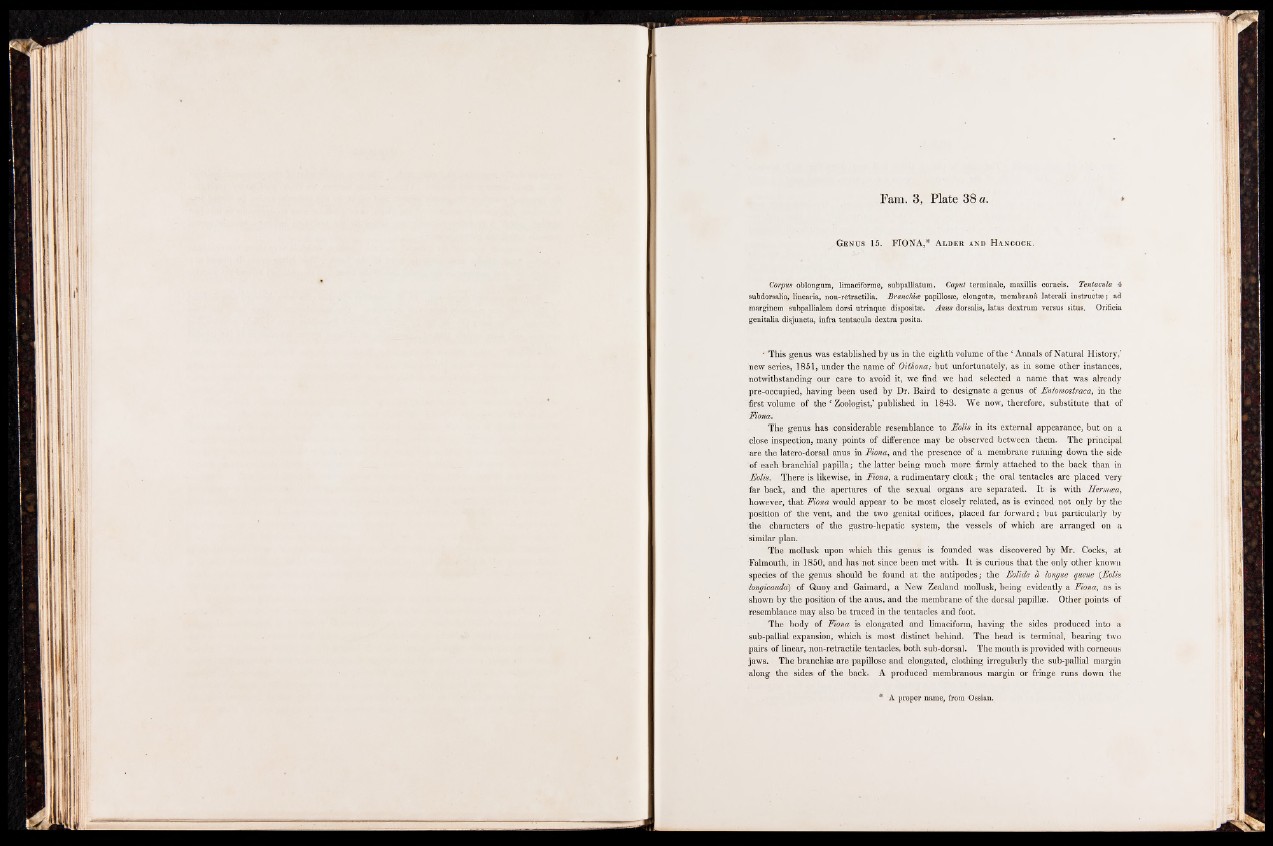
Fam. 3, Plate 38 a.
Genus 15. FIONA,* Alder and Hancock.
Corpus oblongum, limaciforme, subpalliatum. Caput terminale, maxillis corneis. Tentacula 4
subdorsalia, linearia, non-retractilia. Bronchia papillosae, elongatse, membrana laterali instructse; ad
marginem subpallialem dorsi utrinque dispositse. Anus dorsalis, latus dextrum versus situs. Orificia
genitalia disjuncta, infra tentacula dextra posita.
• This genus was established by us in the eighth volume of the |Annals of Natural History,’
hew series, 1851, under the name of Oithona; but unfortunately, as in some other instances,
notwithstanding our care to avoid it, we find we had selected a name that was already
pre-occupied, having been used by Dr. Baird to designate a genus of Entomostraca, in the
first volume of the ‘ Zoologist,’ published in 1843. We now, therefore, substitute that of
Mona.T
he genus has considerable resemblance to Eolis in its external appearance, but on a
close inspection, many points of difference may be observed between them. The principal
are the latero-dorsal anus in Mona, and the presence of a membrane running down the side
of each branchial papilla; the latter being much more firmly attached to the back than in
Eolis. There is likewise, in Fiona, a rudimentary cloak; the oral tentacles are placed very
far back, and the apertures of the sexual organs are separated. It is with Hermcea,
however, that Mona would appear to be most closely related, as is evinced not only by the
position of the vent, and the two genital orifices, placed far forward; but particularly by
the characters of the gastro-hepatic system, the vessels of which are arranged on a
similar plan.
The mollusk upon which this genus is founded was discovered by Mr. Cocks, at
Falmouth, in 1850, and has not since been met with. It is curious that the only other known
species of the genus should be found at the antipodes; the Eolide a longue queue (Eolis
longicauda) of Q.uoy and Gaimard, a New Zealand mollusk, being evidently a Fiona, as is
shown by the position of the anus, and the membrane of the dorsal papillae. Other points of
resemblance may also be traced in the tentacles and foot.
The body of Mona is elongated and limaciform, having the sides produced into a
sub-pallial expansion, which is most distinct behind. The head is terminal, bearing two
pairs of linear, non-re tractile tentacles, both sub-dorsal. The mouth is provided with corneous
jaws. The branchiae are papillose and elongated, clothing irregularly the sub-pallial margin
along the sides of the back. A produced membranous margin or fringe runs down the
* A proper name, from Ossian.